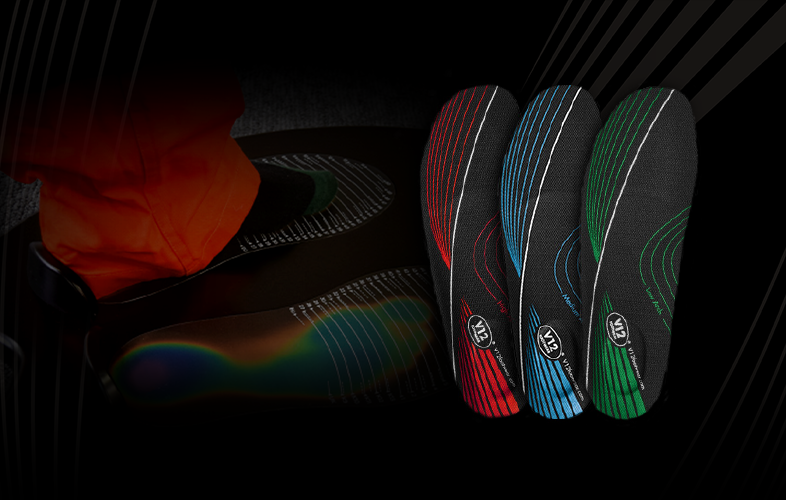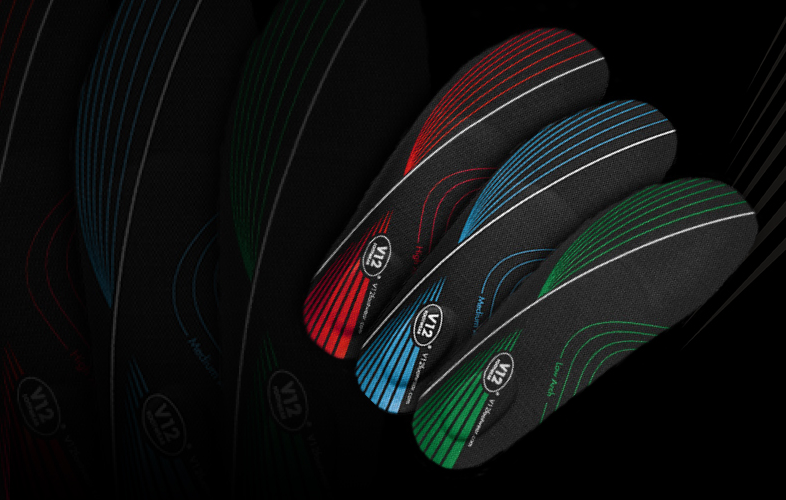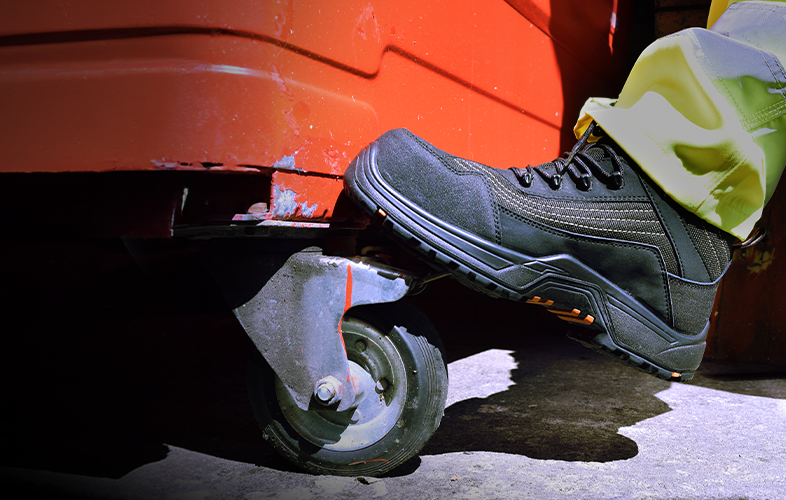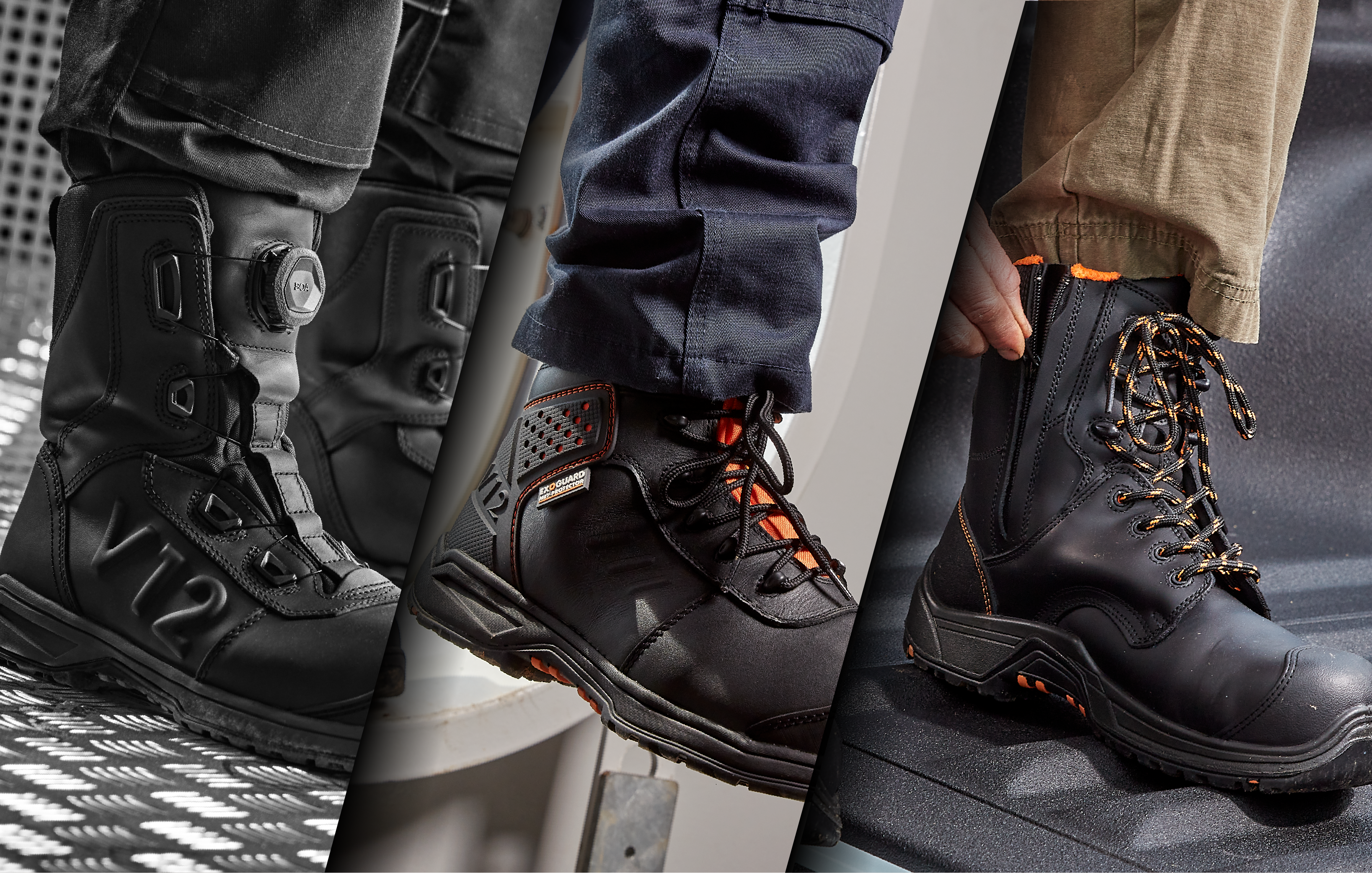If you’re in charge of procurement or Health and Safety in your workplace, you’ll want to do everything you can to not only increase comfort, but maintain it for your team. And when it comes to footwear, insoles can play a major role.
 In this blog, we’ll be taking you through how long an insole in a safety boot should last, plus we’ll give you some handy tips on when to spot an insole that needs replacing, and what type of insole will bring maximum durability and performance.
In this blog, we’ll be taking you through how long an insole in a safety boot should last, plus we’ll give you some handy tips on when to spot an insole that needs replacing, and what type of insole will bring maximum durability and performance.
And while most insoles tend to last between 6 and 12 months, their lifespan depends on a number of factors, particularly if they’re being used at work.
Firstly, before we get to the when, let’s focus on the what:
HOW TO TELL AN insole needS replacing
Flattening
Sometimes referred to as ‘compression,’ when an insole’s supportive cushioning has become flat, it’s certainly time to replace them, because they won’t be absorbing much shock or giving a lot of comfort - leaving the door open to discomfort and joint pain.
Unpleasant odour
If your footwear is releasing a nasty odour, it’s usually a sign that a refresh is necessary.
Tip: This is particularly important, as some wearers end up buying a whole new pair of safety boots due to an unpleasant smell and lost shock absorbance, when all that was required was a fresh pair of insoles!
Foot pain
If an insole has been working fairly successfully by relieving foot pressure and absorbing shock, probably the quickest way to tell they're in need of replacing is whether the wearer's feet are beginning to hurt, as this is a strong indicator that the supportive material has been compromised.
Ready to replace your insoles?
So now you know the signs of an insole that needs replacing, what should you look for to ensure maximum comfort in your new insole?

ARch Support
High-performing insoles should have a specific arch height, because people's feet come in many different shapes and structures.
They can have low, medium and high foot arches, so insoles should reflect this in the height of their supportive material to offer proper, targeted comfort.
This is why V12 Footwear developed the Dynamic ArchTM - an insole range giving individualised arch support through either low, medium or high arch construction. They:
- reduce pressure
- decrease foot pain and strain
- lessen lower limb and back problems
- improve joint alignment
All three sizes come in a specific male and female fit too, so there's bespoke comfort for every wearer.
Want to find out more about V12's Dynamic Arch insoles? Click here.
THE RIGHT SIZE AND FIT
Getting insoles that are the correct size and are arch-supporting will actually extend their life as well as their comfort. If they are measured to fit, the foot won't move around as the arch will be supported, which reduces the wear and tear caused by the friction of the foot rubbing away at the boot. This will also reduce rubbing and blistering of the feet.
Open-cell
It’s probably no surprise that higher quality insoles last longer than cheaper ones, but the key question is: what makes a higher quality insole? Well, in terms of durability and performance over time, it’s all about the cells of the material.
Insoles made with open cell material retain their shape after use, and flatten much less over time, unlike many insoles featuring closed cells. The result is long-lasting and effective support for Plantar Fasciitis and joint mis-alignment.
Moisture-wicking
Active feet can produce up to half a pint of sweat each day. Smelly and uncomfortable? Yes - but also, bad for your foot health.
Sweat is moisture, and moisture softens skin, leaving the foot vulnerable to blistering and Athlete's Foot. So, if insoles are made with specialised moisture-wicking material, sweat is drawn away from the feet, keeping them dry and healthy. Want to see one in action?
Replacing insoles: so how often are we talking?
Some advise that insoles will need replacing once a year, others say once every 3 months. It all depends if those insoles are being used occasionally and lightly or if they're being used with high frequency and high intensity.

The average safety boot wearer takes 12,000 daily steps, but workers in Grounds Care or Waste and Recycling can notch up 15,000 steps per day. Those in Warehouse Picking meanwhile can take even more, and can surpass a staggering 20,000 steps per shift. That’s around 10 miles - which is over a third of a marathon!
So, we can safely put this type of usage in the 'high-intensity' category, particularly as these insoles will be supporting the wearers' standing weight and push energy. And let's not forget, safety boot wearers will often have to carry or operate heavy machinery, which adds more weight to the load that their insoles are absorbing.
While a safety boot wearer might find themselves having to change their insoles more regularly, the material of these insoles and their application determines how many times replacements are needed.
The wrong material, and they'll need changing every few months.
But with open-cell material, moisture-wicking properties and individual arch support, even the hardest wear and most frequent use will allow full comfort and support without the need for a replacement pair for at least six months.
Get the right fit for your team
Did you know? In the UK, around one in ten people will experience the pain of Plantar Fasciitis during their lifetime. How many people in your team will be a part of that statistic? Book a free session for V12 to come to your workplace and measure everyone’s arches with a Dynamic Pressure Map foot scan - we'll help you ensure everyone goes to work pain-free with the right arch support. Click below to find out more.






